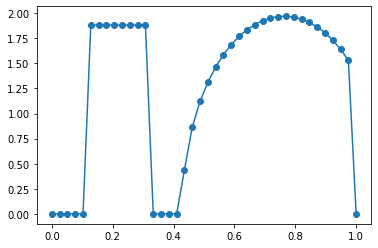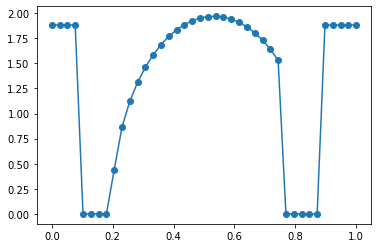The data and code for the paper L. Lu, X. Meng, S. Cai, Z. Mao, S. Goswami, Z. Zhang, & G. E. Karniadakis. A comprehensive and fair comparison of two neural operators (with practical extensions) based on FAIR data. Computer Methods in Applied Mechanics and Engineering, 393, 114778, 2022.
- Burgers' equation
- Darcy problem in a rectangular domain
- Case: Piecewise constant
- Case: Continuous
- Darcy problem in a pentagram with a hole
- Darcy problem in a triangular domain
- Darcy problem in a triangular domain with notch
- Electroconvection problem
- Advection equation
- Linear instability waves in high-speed boundary layers
- Compressible Euler equations with non-equilibrium chemistry
- A flapping airfoil
- Navier-Stokes equation in the vorticity-velocity form
- Regularized cavity flows
- Case: Steady
- Case: Unsteady
- Burgers' equation
- Darcy problem in a rectangular domain
- Case: Piecewise constant
- Case: Continuous
- Darcy problem in a pentagram with a hole
- Darcy problem in a triangular domain
- Darcy problem in a triangular domain with notch
- Electroconvection problem
- Advection equation
- Linear instability waves in high-speed boundary layers
- Compressible Euler equations with non-equilibrium chemistry
- A flapping airfoil
- Navier-Stokes equation in the vorticity-velocity form
- Regularized cavity flows
- Case: Steady
- Case: Unsteady
If you use this data or code for academic research, you are encouraged to cite the following paper:
@article{lu2022comprehensive,
title = {A comprehensive and fair comparison of two neural operators (with practical extensions) based on FAIR data},
author = {Lu, Lu and Meng, Xuhui and Cai, Shengze and Mao, Zhiping and Goswami, Somdatta and Zhang, Zhongqiang and Karniadakis, George Em},
journal = {Computer Methods in Applied Mechanics and Engineering},
volume = {393},
pages = {114778},
year = {2022}
}
To get help on how to use the data or code, simply open an issue in the GitHub "Issues" section.
This work is licensed under a Creative Commons Attribution-NonCommercial-ShareAlike 4.0 International License.






